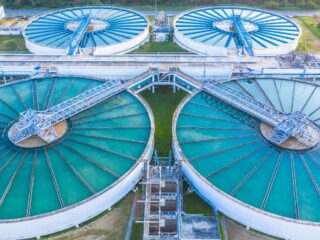
In recent years, sustainable living has become a cornerstone in preserving our planet for future generations. As part of this global shift, the construction industry has significantly transformed, particularly the roofing sector. Sustainable roofing is no longer a niche market or a futuristic idea; it’s a present-day necessity and a vital component of eco-friendly construction practices. The essence of sustainable roofing lies in the materials and methods used like AdvanceRoofingLLC, which aim to reduce environmental impact, enhance energy efficiency, and provide long-lasting solutions. This shift towards sustainability has encouraged homeowners, architects, and builders alike to rethink traditional roofing materials and methods, paving the way for innovative, green alternatives.
As I delve into sustainable roofing, it’s essential to understand that it’s not just about choosing environmentally friendly materials. It’s about adopting a holistic approach that considers the lifecycle of roofing materials, their production processes, and their overall impact on the environment. From reducing carbon footprints to minimizing waste, sustainable roofing encompasses a broad spectrum of practices to balance functionality and environmental stewardship.
Benefits of eco-friendly roofing materials
The transition towards eco-friendly roofing materials is driven by many benefits extending beyond environmental conservation. First and foremost, these materials are pivotal in enhancing a building’s energy efficiency. Green roofs significantly reduce energy consumption by reflecting sunlight and providing better insulation, particularly in heating and cooling. This helps lower greenhouse gas emissions and translates to substantial cost savings for homeowners over time.
Moreover, the durability and longevity of sustainable roofing materials are exceptional. Materials such as metal, slate, and clay tiles are known for their ability to withstand harsh weather conditions and resist wear and tear, making them a wise investment for the long term. This durability reduces the need for frequent repairs and replacements, further diminishing the environmental impact associated with roofing projects.
Common sustainable roofing materials
Regarding sustainable roofing materials, several options are available, each with its own set of environmental benefits. Metal roofing, for instance, is highly prized for its recyclability and energy efficiency. Made from materials such as aluminum, steel, or copper, metal roofs reflect solar radiation, reducing the need for air conditioning in hot weather. Additionally, most metal roofing products are made from recycled materials and are fully recyclable at the end of their lifespan.
Solar tiles are another innovative solution, merging traditional roofing materials with photovoltaic technology. These tiles capture solar energy, converting it into electricity that can power a home. Not only do they reduce reliance on fossil fuels, but they also blend seamlessly with the aesthetic of traditional roofs, making them a practical choice for those looking to incorporate renewable energy into their homes without compromising on style.
Green or living roofs are the epitome of sustainable roofing. Covered with vegetation, these roofs provide excellent insulation, absorb rainwater, and create habitats for wildlife. They also reduce the urban heat island effect, making them an ideal choice for city dwellings. While green roofs require more structural support and maintenance than traditional materials, their environmental benefits and aesthetic appeal make them a compelling option for eco-conscious homeowners.
Factors to consider when choosing eco-friendly roofing materials
Selecting the right eco-friendly roofing material requires careful consideration of several factors. Climate is a critical determinant, as the material’s performance can vary significantly depending on the local weather conditions. For instance, metal roofs might be more suitable for areas prone to wildfires due to their fire resistance, while green roofs could be more advantageous in urban settings to mitigate heat islands.
The architectural style of the building also plays a crucial role in the selection process. The material should complement the overall design and aesthetic of the structure while fulfilling its functional requirements. Moreover, the weight of the material and the existing roof structure’s ability to support it must be assessed to ensure safety and structural integrity.
The role of contractors in sustainable roofing
Contractors play a pivotal role in the successful implementation of sustainable roofing projects. Their expertise and knowledge are invaluable in guiding homeowners through selecting eco-friendly materials that suit their specific needs and preferences. A contractor with experience in sustainable roofing can provide insights into the benefits and limitations of different materials, helping homeowners make informed decisions.
Furthermore, contractors are responsible for ensuring the installation adheres to sustainable practices. This includes minimizing waste, recycling materials whenever possible, and using energy-efficient tools and machinery. By prioritizing sustainability at every project step, contractors can significantly reduce the environmental impact of roofing works.
Collaboration between homeowners and contractors is essential for achieving a sustainable outcome. Open communication about expectations, budget, and sustainability goals allows for a smoother process and ensures that the final product aligns with the homeowner’s vision of an eco-friendly roof.
The future of sustainable roofing
As we look to the future, it’s clear that sustainable roofing will play an increasingly central role in the construction industry. Advances in materials science and green technology are paving the way for even more innovative and environmentally friendly roofing options. The growing awareness of climate change and the push towards sustainability are driving demand for green roofing solutions that are not only eco-friendly but also cost-effective and aesthetically pleasing.
Integrating renewable energy sources, such as solar panels and wind turbines, into roofing materials is a trend that is likely to gain momentum. This approach reduces the building’s carbon footprint and provides a sustainable energy source, further enhancing the environmental benefits of green roofs.
In addition, developing smart roofing materials capable of adapting to environmental conditions to optimize energy efficiency is an exciting area of research. These materials could revolutionize how roofs are designed and function, making sustainable roofing an even more attractive option for homeowners and builders.
Conclusion
The journey towards sustainable roofing is an exciting and essential aspect of the broader movement towards eco-friendly living. By embracing green roofing materials and practices, we can significantly reduce the environmental impact of our homes and buildings. The benefits of sustainable roofing, from energy efficiency to enhanced durability, make it a compelling choice for anyone looking to build or renovate their home.







